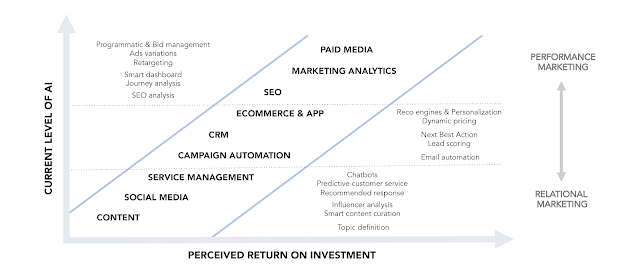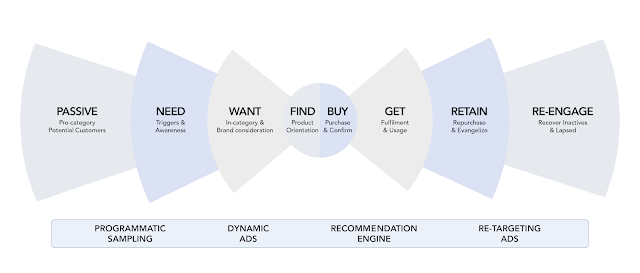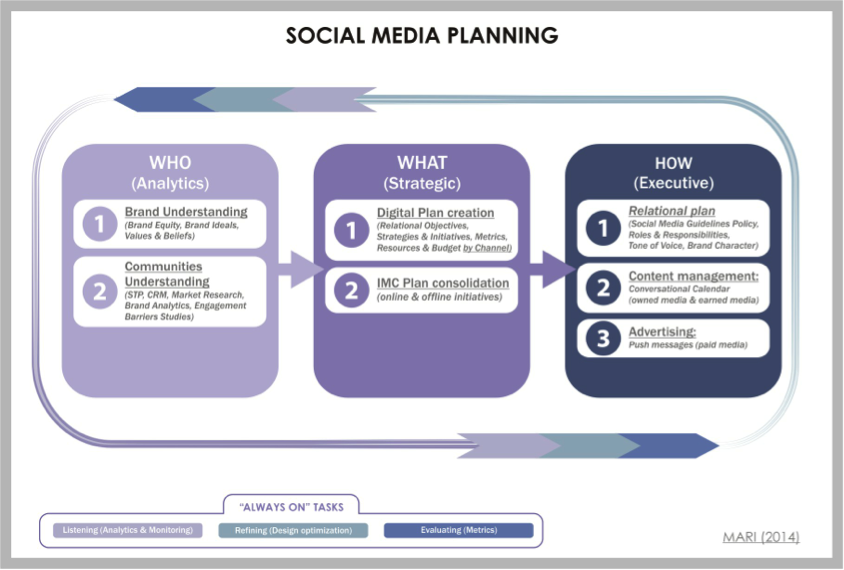Machine Learning in Marketing: 3 key trends
Marketing professionals face increasing complexity due to the explosion of digital and data touchpoints, as well as unprecedented consumers’ expectations in terms of interaction, content, and offer personalization. They came to realize that Machine Learning (ML) is the only possible way to cope with this level of complexity.
Machine learning is developing under the great promise that marketing can now be both more efficient and human. The diffusion of intelligent models can be noticed in three key areas:
1. Inside Marketing Technologies
ML is powering many of the marketing software (enterprise solutions, individual tools or apps) that marketers require to turn the vast array of historical data into actionable insights.
“AI algorithms and technologies are going to be deeply embedded at every layer of what the marketing software is.” - Scott Brinker, VP Platform Ecosystem at HubSpot
 |
| Figure 1. Marketing and AI Technologies dependencies |
Companies receive both direct and indirect benefits of using machine learning:
- Direct: by proactively implementing an AI strategy that defines how models, whether they are built internally, bought from third-parties, or rent “as-a-service,” respond to specific business needs.
- Indirect: by using marketing technologies that incorporate AI components.
Marketing and AI technologies are profoundly affecting each other and, combined, are contributing to the rise of ML in Marketing.
2. Across marketing functional areas
ML is affecting every single functional area of marketing, from social media to paid media. Different functions show, however, different levels of both technical sophistication and financial results from the use of ML applications.
“We must see AI as an all-encompassing technology that is applied to every single field of marketing.” - Gianluca Ruggiero, CEO of Massive
 |
| Figure 2. AI sophistication and ROI across functional areas |
Today, managers perceive that infusing AI and ML in the field of paid media, marketing analytics, and SEO (“performance marketing") provide the highest return on investment. Other use cases that collocate AI in traditionally human-intense activities, such as content creation, social media, and service management, characterized by close relationships between consumers and brands, are perceived to provide a lower return on investment.
Being that these dynamics are fast changing, several experts already predict a broader usage of machine learning for creative and relational activities in the near feature.
3. Along consumer journeys
AI is infused at different stages of the consumer journey and requires individual, yet coordinated implementations.
“You cannot write one algorithm that works for the whole marketing process. Instead, you use a variety of algorithms to create a variety of models that solve a specific problem with a specific data set. You solve that problem for a period of time, and then you need to change it in order to get even more improvement.” - Jim Sterne, Director Emeritus at Digital Analytics Association
 |
| Figure 3. AI-powered consumer journey of Amazon |
source: adapted from Hackernoon
Although we can expect incremental usage of consumer-facing applications used simultaneously, like in the case above, managers need to realize that human intervention in each workflow largely varies depending on the defined marketing goals.
Conclusion
Machine learning models, embedded or not into marketing software, are powering (and will continue to power) every single functional area of marketing and each step of the consumer journey.
From Linkedin
From Linkedin


Comments